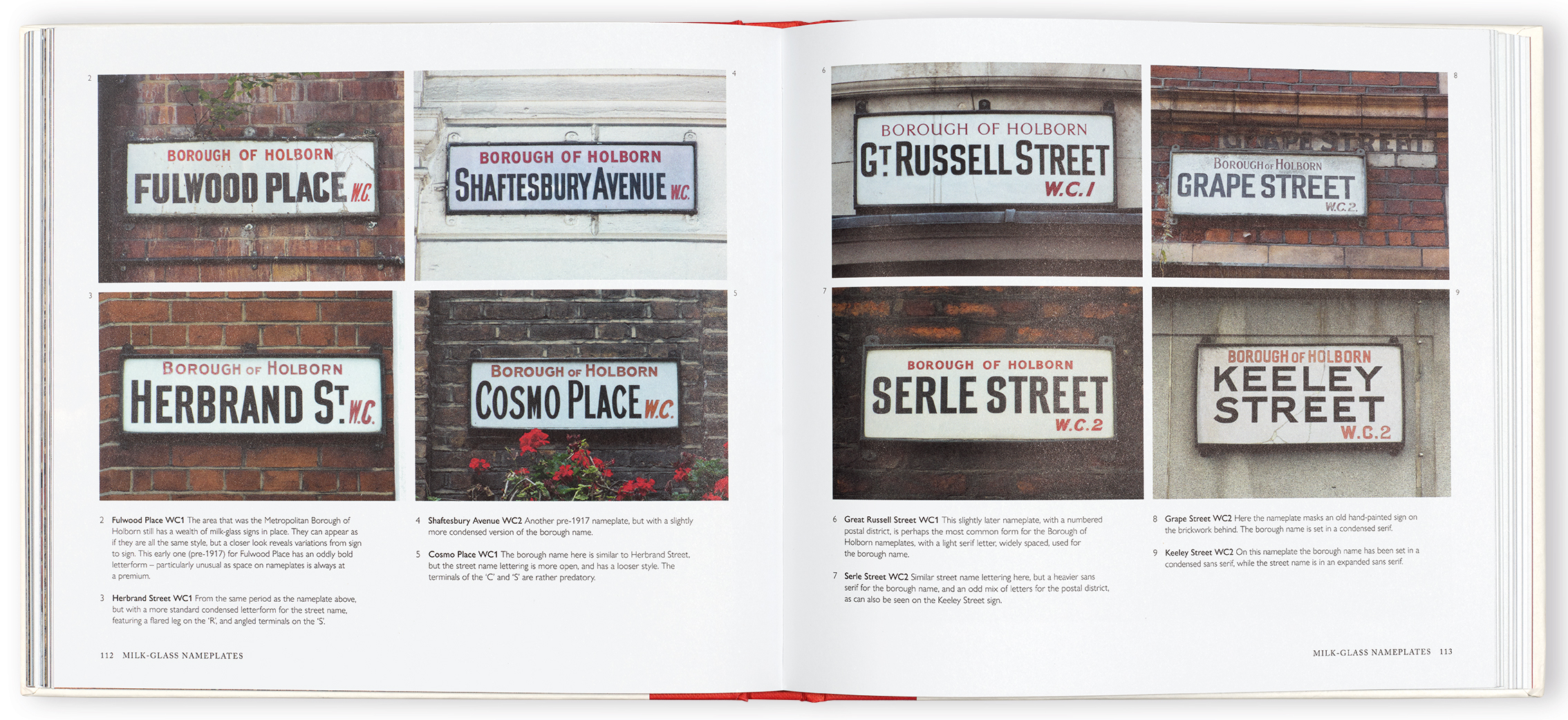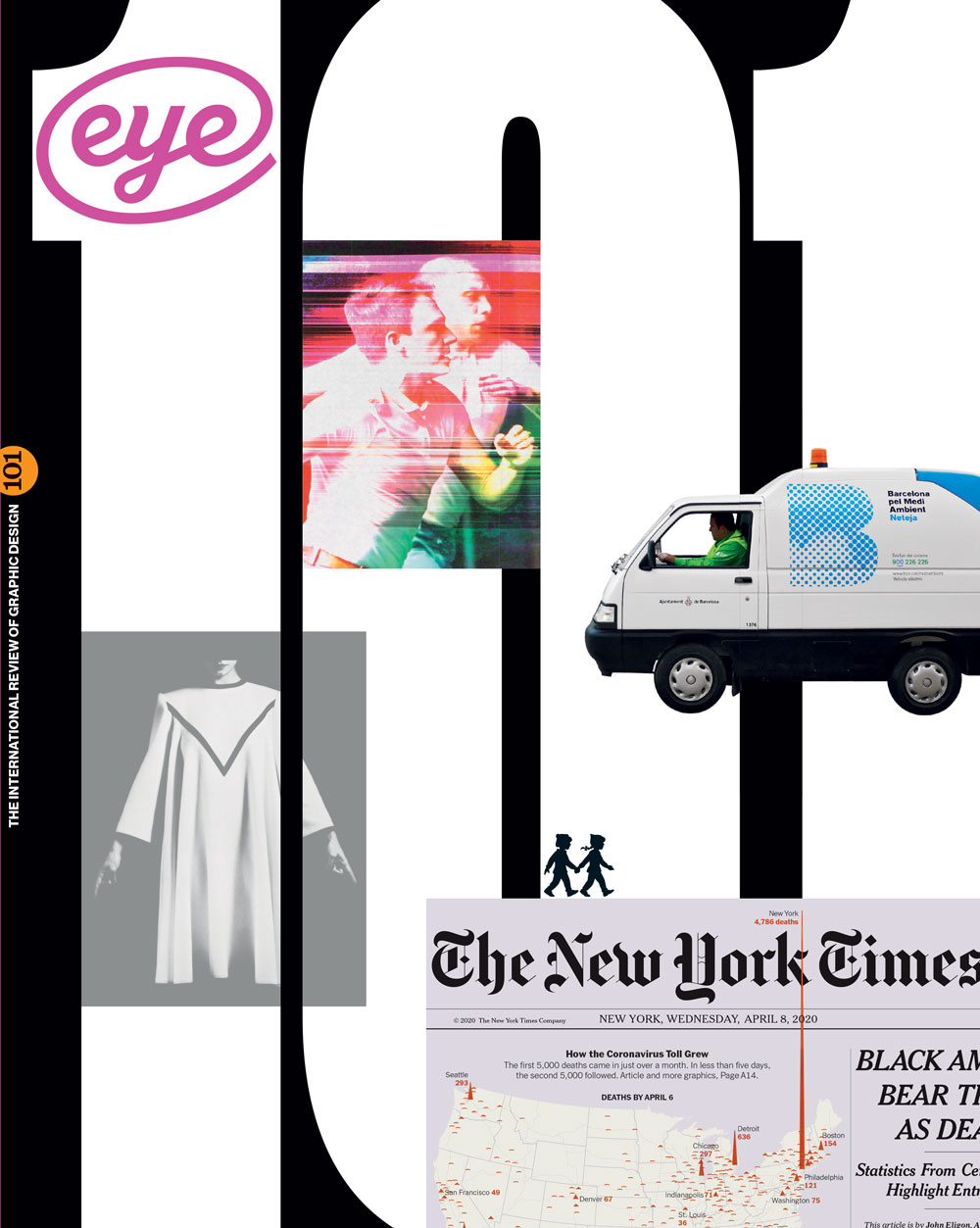Summer 2021
Signs of street life
Alistair Hall
We Made This
Design history
Graphic design
Information design
Reviews
Typography
Visual culture
London Street Signs, A Visual History of London's Street Nameplates
Designed and written by Alistair Hall, Batsford, £14.99

At a time when many of us know our location all too well, having been unable to leave our homes much of late, the opportunity this book offers to vicariously wander the city is one of its most immediate contributions. It is a book that celebrates a means to know where we are.
The book sets out a visual history of one of the most ubiquitous yet overlooked graphic elements of our public spaces. To do so, it draws from a photographic archive of more than 4000 photographs of London street nameplates that the author has recorded over the past four years and shared online.
Before considering how the book expands upon this photographic documentation, it is worth noting the quality of the images assembled. The scale, balance and lack of distortion achieved in the layouts of the final image selection belie just how difficult street nameplates can be to photograph, especially those situated on upper storeys or on busy roads. Furthermore, the rigour observed in recording the plates allows for comparison of details that would otherwise be impossible to see and which offer important clues to the stories these items of everyday street furniture have to tell.
It is in this storytelling where the book really excels. The image selection is underpinned by impressively detailed contextual research. It is quite remarkable that a nameplate predating the Great Fire of London should still be in situ.
Examples are, for the most part, sensibly organised around the materials used in their construction. There is much to inspire the contemporary designer in the material inventiveness featured in products such as Vitrolite, or the cutting of street names into kerb stones. Though what comes through especially in the discussion of examples is a sense of the people and makers whose lives these nameplates helped order. The observance of details in the comparative notes warmly elucidate stories of local makers, while many of the images record improvisations and adaptations of use by communities. Humorously so in the case of those installing Hampstead’s distinguished tiled nameplates who decided that an upside-down ‘Q’ could substitute nicely for an ‘O’.
More broadly, the book shows how shifting commuting and communication patterns [and their economic and societal contexts], together with the territorial politics of metropolitan organisation, have shaped the ways the street nameplate has enabled us to find our place. And while the sense of place in question is specifically London, the book makes clear the relevance of the approaches featured well beyond the capital.
Cover of London Street Signs, A Visual History of London's Street Nameplates designed and written by Alistair Hall. Top. Spread from Hall’s London Street Names showing the ‘milk-glass’ (later branded as Vitrolite) nameplates prevalent in Hoborn and Westminster.

Though clearly aimed at designers, a further strength of the book is the way that it opens out the subject to a more general audience. It starts to expose the basis for ideas about ‘good taste’ and the design choices made through its detailed discussion of examples, taking into consideration factors such as alignment, spacing, and so on. It does not avoid thorny issues of terminology either. Bravo for a book that accurately sets out the differences between lettering and type and why they matter. Predatory serifs, mermaid tails and plenty of other wonderful descriptive terms also help to explain the more idiosyncratic details of letterform.
As the book concludes, the decision-making behind the design and implementation of more recent street nameplates seems ill-informed, so the more awareness of the complexities involved, the better. The book teases out some of the particular challenges of restoring old signs, counterpointing the well-meaning duty of care of enterprising local souls with the false economies of local government. More positively it identifies the connection between the representation of a local community within a sign system as a hopeful strategy for enhancing wider environmental concerns.
A street index allows you to start to explore the book’s content as it relates to a London location of your choice, with an open invitation to build on the knowledge set out. The end credits even list a playlist to listen to while you do.
Catherine Dixon, teacher, designer, London
First published in Eye no. 101 vol. 26, 2021
Eye is the world’s most beautiful and collectable graphic design journal, published for professional designers, students and anyone interested in critical, informed writing about graphic design and visual culture. It is available from all good design bookshops and online at the Eye shop, where you can buy subscriptions and single issues.

